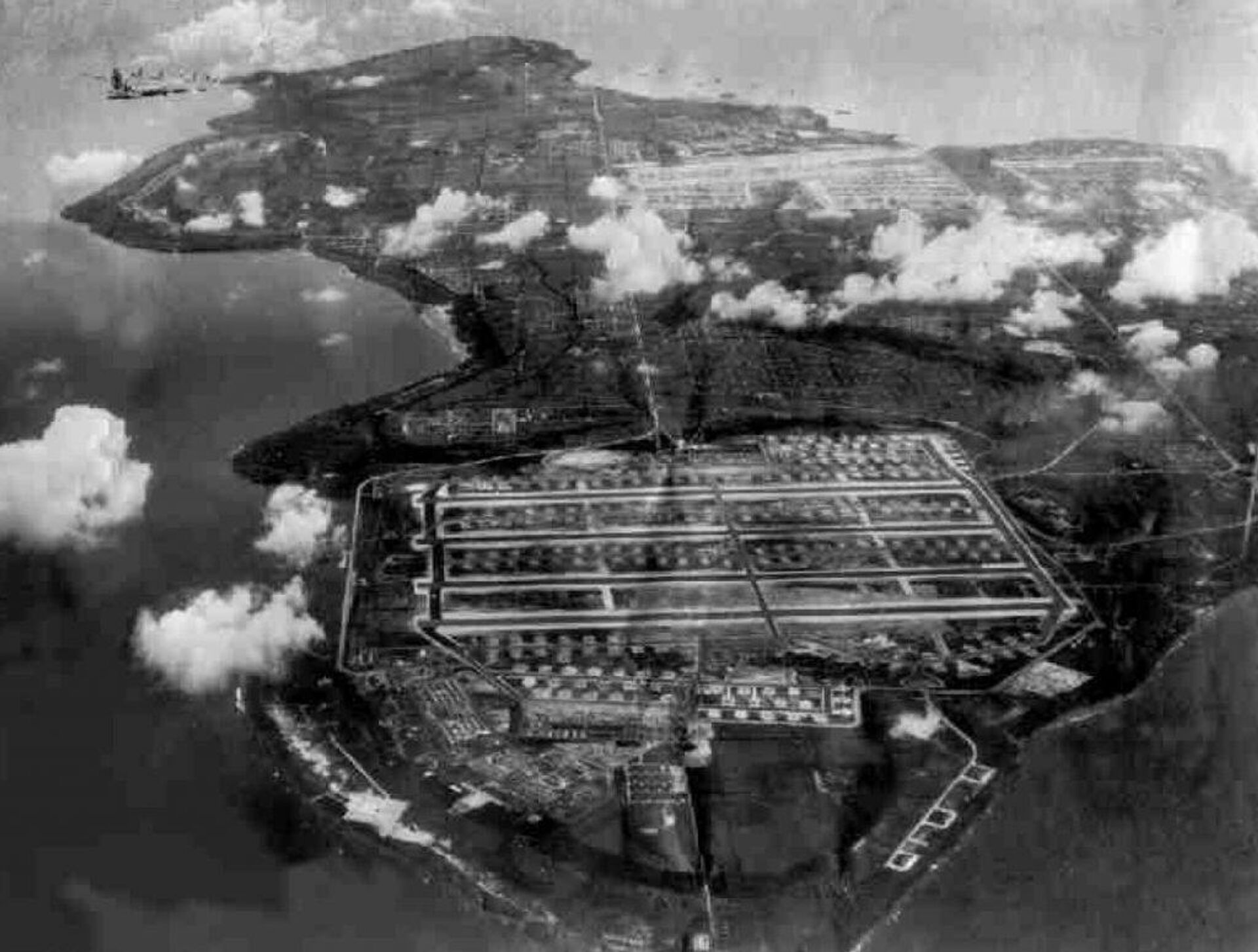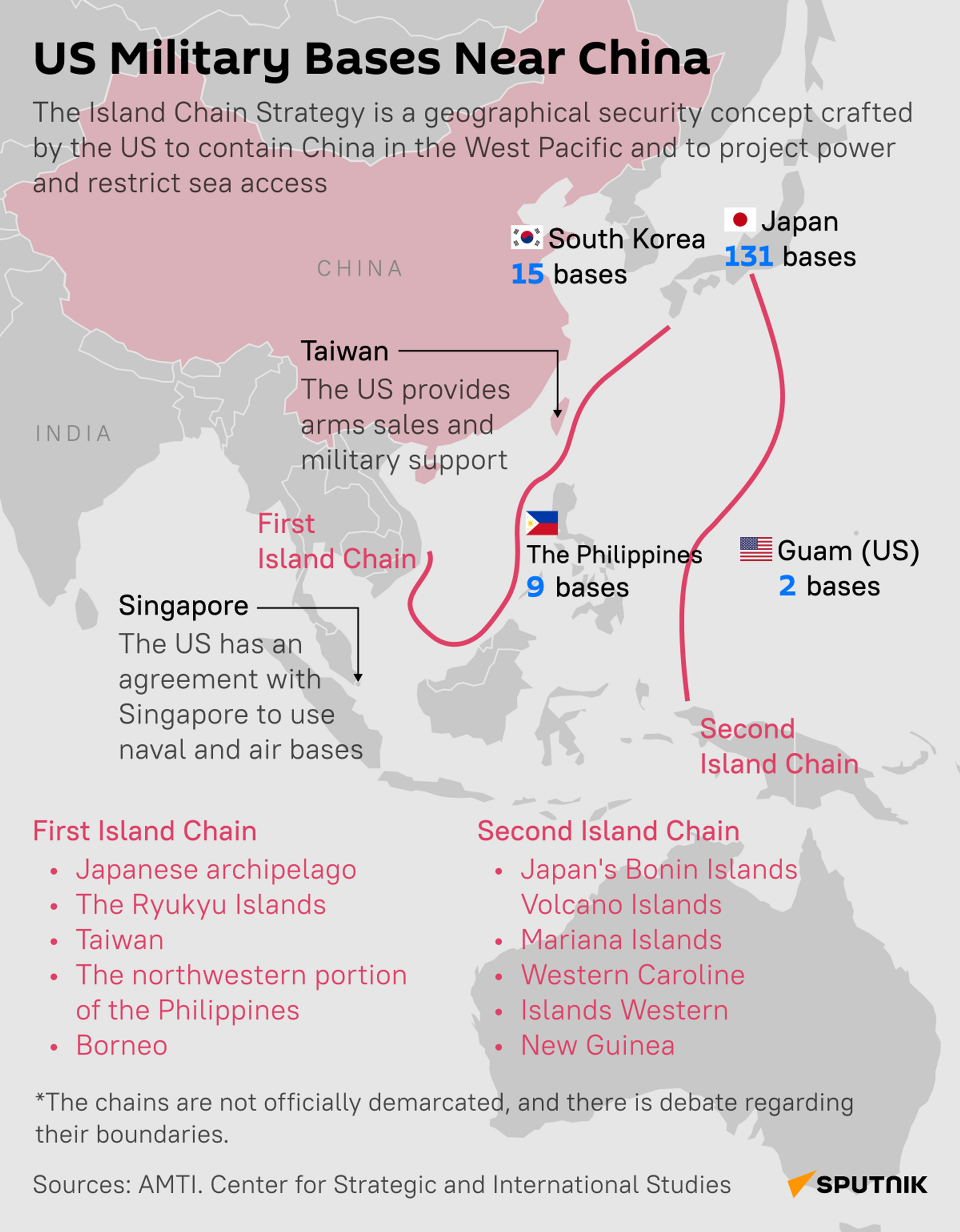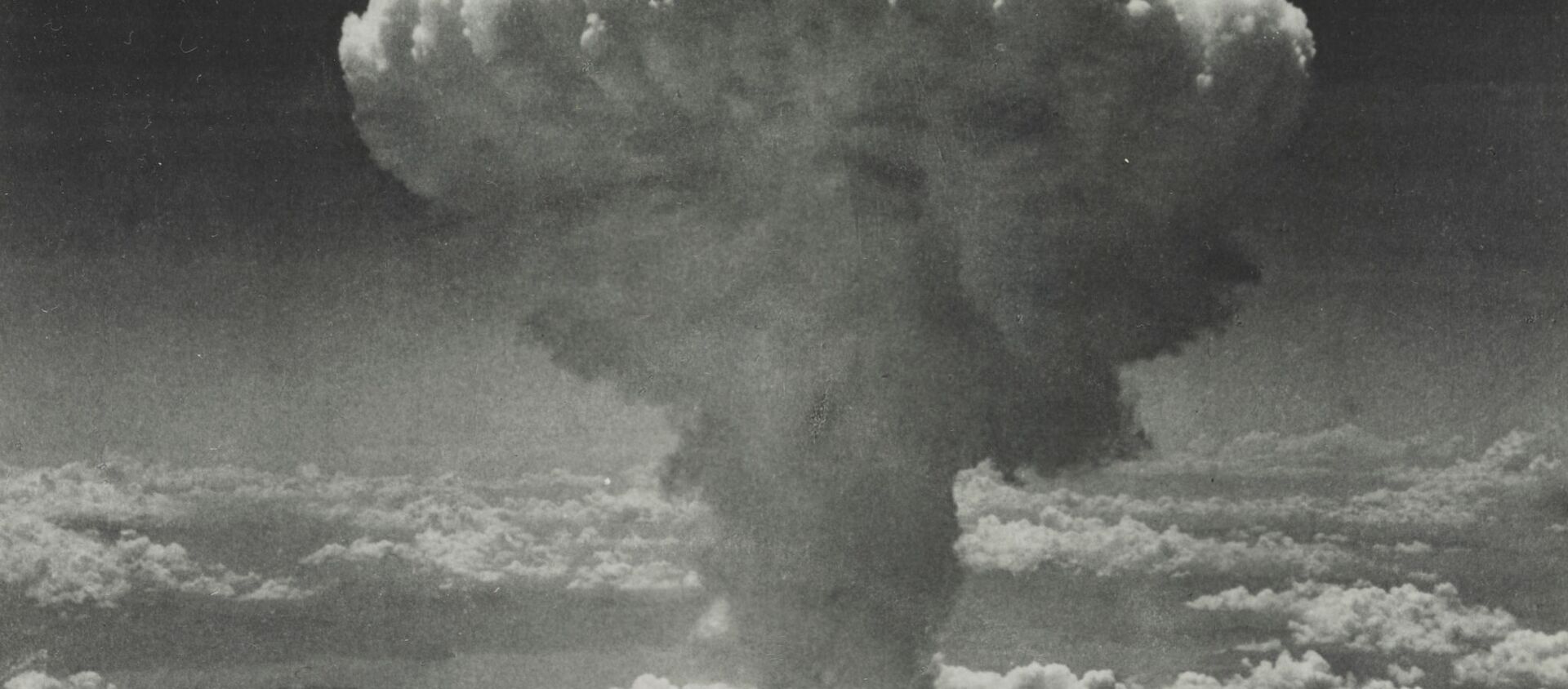https://sputnikglobe.com/20231222/warning-for-china-us-reclaims-airfield-used-to-firebomb-and-nuke-japan-in-wwii-1115744171.html
Warning for China? US Reclaims Airfield Used to Firebomb and Nuke Japan in WWII
Warning for China? US Reclaims Airfield Used to Firebomb and Nuke Japan in WWII
Sputnik International
Up to 240,000 people were killed in the US atomic bombings of Hiroshima and Nagasaki in August 1945 in the closing days of World War II. In the years and decades since, eight other nations have come into possession of nuclear weapons, but the US remains the only nation in history to have ever used them.
2023-12-22T11:27+0000
2023-12-22T11:27+0000
2023-12-22T11:27+0000
military
us
pentagon
base
military base
china
strategy
https://cdn1.img.sputnikglobe.com/img/07e7/0c/16/1115744002_0:125:1201:800_1920x0_80_0_0_81dec324ac6ec9cac92e806fe094d7b3.jpg
The United States is restoring a mothballed airfield on the Pacific island of Tinian in the Commonwealth of the Northern Mariana Islands.The airfield, situated roughly 2,300 km southeast of Japan and about 3,000 km southeast of mainland China, carries the grim status of having served as the launch point for the B-29 bombers used to drop atomic bombs on Japan on August 6 and 9, 1945. It was also one of the main staging areas for B-29 attacks which leveled Japanese cities in conventional firebombing attacks, which killed over three times more civilians than the atom bombs did.The airfield is said to have “extensive pavement underneath the overgrown jungle,” which will be cleared “out between now and summertime” of 2024, according to Wilsbach.The revitalization of Tinian is meant to serve as part of the Pentagon’s strategy of stationing additional resources in the Western Pacific surrounding China, and spreading out deployments to prevent concentrations of easily targetable manpower and equipment.Besides Tinian, the Pentagon has made moves to substantially expand the size of the US’s military footprint in allied countries, including unprecedented trilateral drills and operations with Japan and South Korea, and to establish new capabilities at sites across Australia, the Philippines and Papua New Guinea.The US strategy of “containing” China goes back to the early 1950s, when future Eisenhower Secretary of State John Foster Dulles outlined the so-called “Island China Strategy,” in which the series of islands around the People’s Republic were to be turned into heavily armed and fortified outposts with offensive weaponry to target the mainland and prevent the Chinese Navy from exiting its home ports.The People’s Liberation Army has created a series of workarounds in response, including the construction of ballistic missile submarines capable of evading the watchful eyes of the US and its allies, and ground-based ultra-long-range nuclear and conventional missile systems which can target American bases across the region in the event of a crisis.The atomic bombings of Hiroshima and Nagasaki are among the most controversial pages in US history. For decades after the attacks, US government officials and many Western historians deemed the bombings a necessary evil to force Japan to surrender amid fears that a naval invasion would cost the lives of tens if not hundreds of thousands of US soldiers. In the Soviet Union and modern Russia, the bombings have been characterized as a gratuitous display by the Truman administration of America’s newfound superweapon, and a message to its erstwhile Soviet wartime allies about Washington’s plans to become the masters of the post-war world order. The atomic bombings coincided with Operation August Storm, the term applied to the Soviet invasion of Japanese-occupied Manchuria in August 1945, which saw the Red Army crush the 1.1 million strong Japanese Imperial Army in less than two weeks. Soviet and Russian historians believe that event, and the threat of a Soviet invasion of northern Japan, ultimately had more of an impact on Emperor Hirohito’s decision to surrender than the atomic bombings. Some revisionist Western historians have since adopted the Russian point of view.
https://sputnikglobe.com/20200806/nuking-of-japan-was-totally-unnecessary-and-didnt-end-world-war-ii-us-historian-explains-1080055399.html
china
Sputnik International
feedback@sputniknews.com
+74956456601
MIA „Rosiya Segodnya“
2023
News
en_EN
Sputnik International
feedback@sputniknews.com
+74956456601
MIA „Rosiya Segodnya“
Sputnik International
feedback@sputniknews.com
+74956456601
MIA „Rosiya Segodnya“
why is us surrounding china with bases, why did us nuke japan
why is us surrounding china with bases, why did us nuke japan
Warning for China? US Reclaims Airfield Used to Firebomb and Nuke Japan in WWII
Up to 240,000 people were killed in the US atomic bombings of Hiroshima and Nagasaki in August 1945 in the closing days of World War II. In the years and decades since, eight other nations have come into possession of nuclear weapons, but the US remains the only nation in history to have ever used them.
The United States is restoring a mothballed airfield on the Pacific island of Tinian in the Commonwealth of the Northern Mariana Islands.
The airfield, situated roughly 2,300 km southeast of Japan and about 3,000 km southeast of mainland China, carries the grim status of having served as the launch point for the B-29 bombers used to drop atomic bombs on Japan on August 6 and 9, 1945. It was also one of the main staging areas for B-29 attacks which leveled Japanese cities in conventional firebombing attacks, which killed over three times more civilians than the atom bombs did.
“If you pay attention in the next few months, you will see significant progress, especially at Tinian North,” General Kenneth Wilsbach, US Pacific Air Forces commander,
told Japanese media this week regarding the reclamation plans.
The airfield is said to have “extensive pavement underneath the overgrown jungle,” which will be cleared “out between now and summertime” of 2024, according to Wilsbach.
The revitalization of Tinian is meant to serve as part of the Pentagon’s strategy of stationing additional resources in the Western Pacific surrounding China, and spreading out deployments to prevent concentrations of easily targetable manpower and equipment.
“You create a targeting problem, and you may actually take some hits, but you still have preponderance of your forces still creating effect,” Wilsbach said of the deployment strategy, known in Pentagon-speak as ‘Agile Combat Employment’.
Besides Tinian, the Pentagon has made moves to substantially expand the size of the US’s military footprint in allied countries, including unprecedented trilateral drills and operations with Japan and South Korea, and to establish new capabilities at sites across Australia, the Philippines and Papua New Guinea.
The US strategy of “containing” China goes back to the early 1950s, when future Eisenhower Secretary of State John Foster Dulles outlined the so-called “Island China Strategy,” in which the series of islands around the People’s Republic were to be turned into heavily armed and fortified outposts with offensive weaponry to target the mainland and prevent the Chinese Navy from exiting its home ports.
The People’s Liberation Army has created a series of workarounds in response, including the construction of ballistic missile submarines capable of evading the watchful eyes of the US and its allies, and ground-based ultra-long-range nuclear and conventional missile systems which can target American bases across the region in the event of a crisis.
The atomic bombings of Hiroshima and Nagasaki are among the most controversial pages in US history. For decades after the attacks, US government officials and many Western historians deemed the bombings a necessary evil to force Japan to surrender amid fears that a naval invasion would cost the lives of tens if not hundreds of thousands of US soldiers. In the Soviet Union and modern Russia, the bombings have been characterized as a gratuitous display by the Truman administration of America’s newfound superweapon, and a message to its erstwhile Soviet wartime allies about Washington’s plans to become the masters of the post-war world order. The atomic bombings coincided with Operation August Storm, the term applied to the Soviet invasion of Japanese-occupied Manchuria in August 1945, which saw the Red Army crush the 1.1 million strong Japanese Imperial Army in less than two weeks. Soviet and Russian historians believe that event, and the threat of a Soviet invasion of northern Japan, ultimately had more of an impact on Emperor Hirohito’s decision to surrender than the atomic bombings. Some revisionist Western historians have since adopted the Russian point of view.







